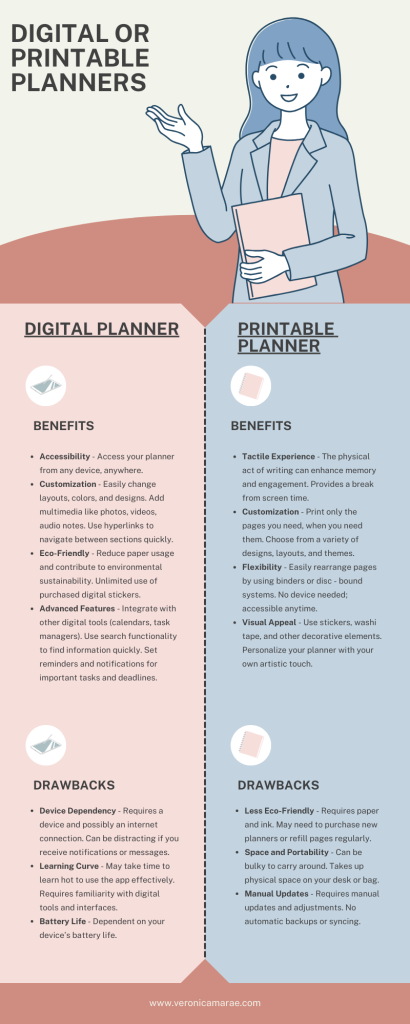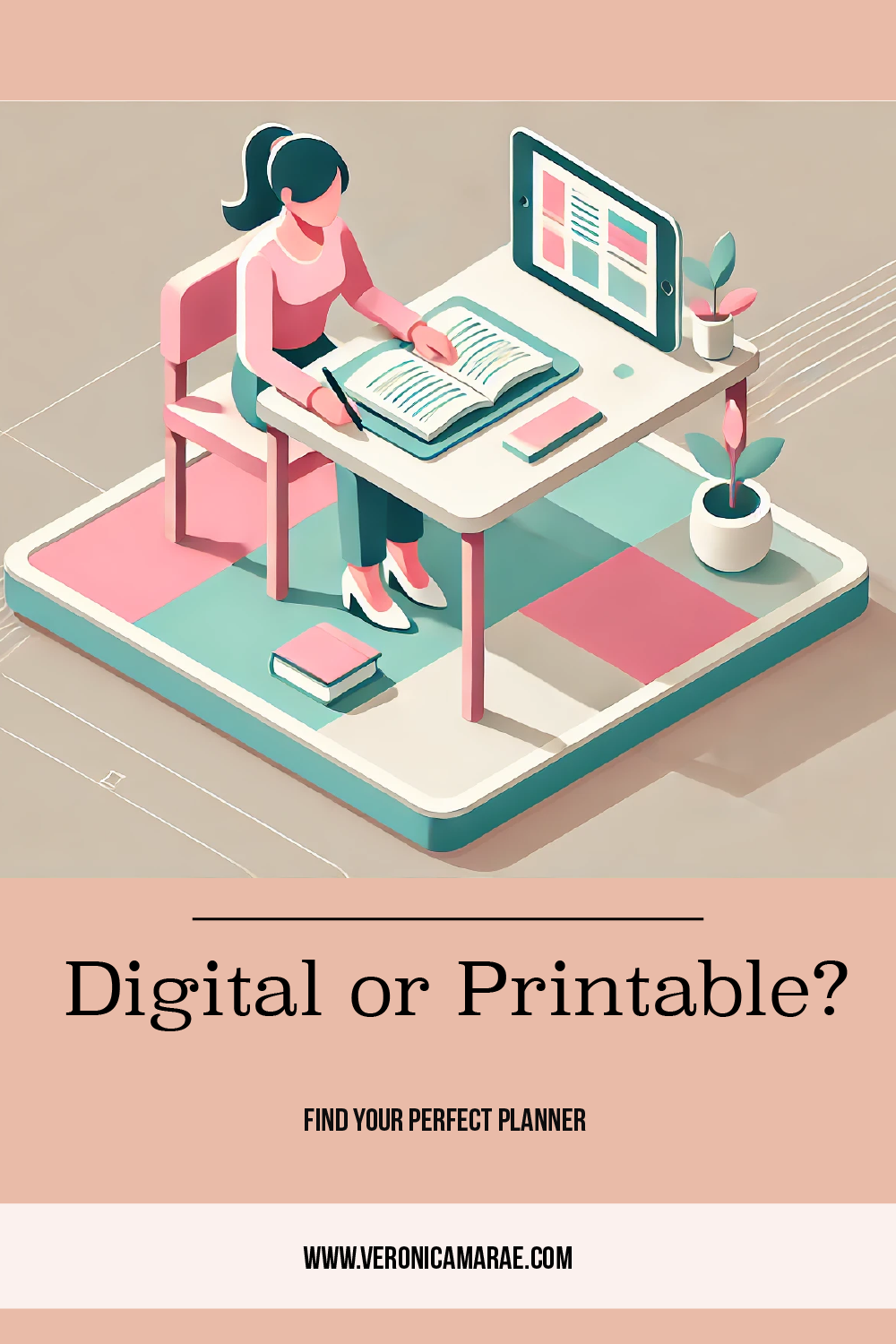
Planning is an essential part of managing our busy lives, helping us stay organized, set goals, and boost productivity. With so many options available, deciding between digital and printable planners can be overwhelming. Both have their unique advantages and can cater to different lifestyles and preferences. In this guide, we’ll explore the key features, benefits, and potential drawbacks of both digital and printable planners, helping you make an informed decision.
Why Planning is Essential
Before we dive into the details, it’s important to understand why planning is crucial. Effective planning helps you stay organized by keeping track of tasks, appointments, and goals. It enhances productivity by setting clear priorities and providing a structured roadmap for your day, week, or month. Planning also aids in goal setting, helping you achieve both short-term and long-term objectives. Additionally, it reduces stress by giving you a clear overview of what needs to be done, allowing you to manage your time and resources more effectively.
Digital Planners
Digital planners are electronic versions of traditional planners that can be used on devices like tablets, smartphones, and computers. They offer several advantages that make them appealing to many users. One significant benefit is accessibility. You can access your planner from any device, anywhere, and sync it across multiple devices to keep your information up-to-date. This level of accessibility ensures that you always have your planner with you, whether you’re at home, in the office, or on the go.
Customization is another major advantage of digital planners. They allow you to easily change layouts, colors, and designs to suit your preferences. You can also add multimedia elements like photos, videos, and audio notes, enhancing the depth and richness of your planning experience. Digital planners often include advanced features such as search functionality, reminders, and notifications, which can significantly boost your productivity.
However, digital planners do have some potential drawbacks. They require a device and possibly an internet connection, which can be a limitation if you’re in an area without connectivity or if your device runs out of battery. Additionally, there is a learning curve involved in using digital planning apps effectively. Some users may find it challenging to navigate the various features and interfaces.
Popular digital planning apps include GoodNotes, Notability, OneNote, and Evernote. GoodNotes excels in handwriting recognition and allows for extensive customization of templates and covers. Notability stands out with its audio recording feature, making it ideal for students and professionals. OneNote offers robust organization features and integrates seamlessly with the Microsoft Office suite. Evernote is known for its powerful search capabilities and integration with numerous third-party apps.
Printable Planners
Printable planners offer a different set of benefits that cater to those who prefer a tangible and tactile planning experience. One of the main advantages of printable planners is the physical act of writing, which can enhance memory and engagement. For many people, taking a break from screen time and engaging with a physical planner is a refreshing change.
Customization is also a significant benefit of printable planners. You can print only the pages you need, when you need them, and choose from a wide variety of designs, layouts, and themes. This flexibility allows you to create a planner that perfectly suits your needs and preferences. Printable planners are also accessible anytime, without the need for a device or internet connection.
On the downside, printable planners can be less eco-friendly due to the need for paper and ink. They can also be bulky to carry around and take up physical space on your desk or in your bag. Additionally, updating and adjusting a printable planner requires manual effort, which can be time-consuming.
Popular options for printable planners include dated planners, undated planners, and bullet journals. Dated planners provide a structured format with pre-set dates and months, while undated planners offer flexibility for you to start anytime. Bullet journals are highly customizable and great for creative planning and tracking habits.

How to Choose the Right Planner for You
When deciding between a digital and a printable planner, consider your lifestyle, planning needs, environmental considerations, and budget. If you spend most of your time in front of a screen and need advanced features like reminders and multimedia integration, a digital planner might be more convenient. If you prefer a break from digital devices and enjoy the tactile experience of writing, a printable planner could be more satisfying.
Your planning needs also play a crucial role in this decision. Digital planners offer advanced features that can enhance your productivity, while printable planners allow for creative expression and hands-on engagement. Environmental considerations are another factor; digital planners are more eco-friendly, while printable planners can contribute to paper waste.
Budget is also important. Digital planners often require a one-time purchase or subscription for apps, whereas printable planners require ongoing costs for paper, ink, and possibly a printer.
Conclusion
Both digital and printable planners have their unique advantages and can enhance your productivity and organization in different ways. The choice ultimately depends on your personal preferences, lifestyle, and planning needs. By understanding the benefits and drawbacks of each, you can make an informed decision and choose the planner that best suits your life.

